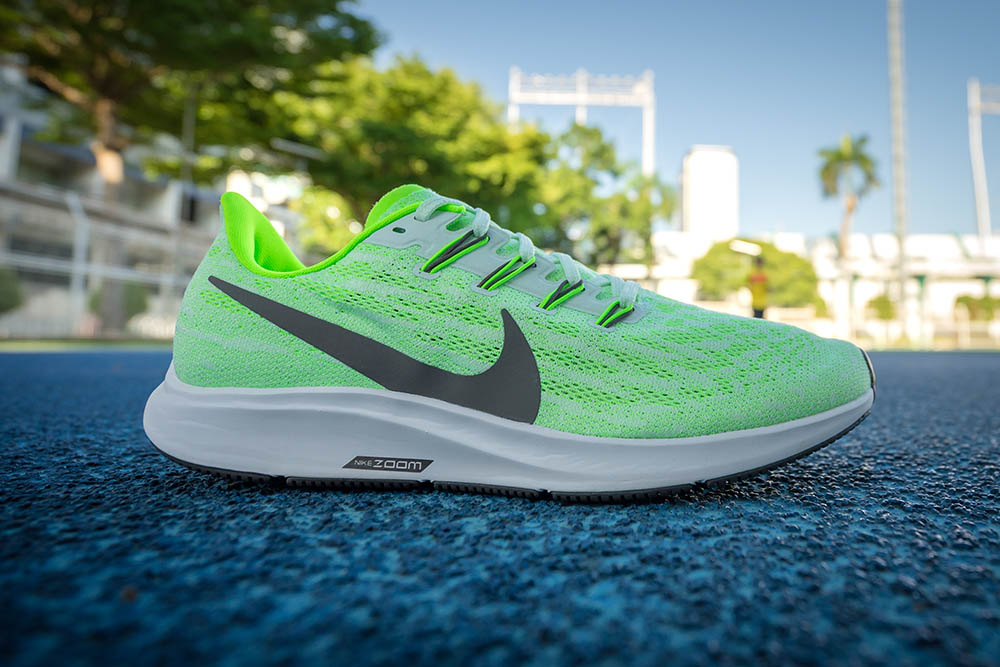The Nike Zoom Pegasus Turbo 2 is one of the most talked about Nike shoes on the market! We all know its predecessor Zoom Pegasus 35 Turbo wasn’t the success that Nike hoped it would be.

It was uncomfortable for long distance runners and was advertised as the all rounder shoe when in reality it was just pretty. Nike created a beautiful shoe at the price of functionality. The 35 Turbo was clearly made to be softer and not for racing.
That’s not to say that the Zoom Pegasus 35 was a terrible shoe. It just wasn't worth its price, and it wasn’t as good as the previous Nikes.
So will the Zoom Pegasus Turbo 2 fall into the same pitfalls as its previous model, or has Nike learned that we care about functionality as well as style? This is what we are going to find out.
Some Basic Stats
The first thing we know is that the Turbo 2 is designed to elevate the whole Pegasus line of creation. This shoe is advertised as an elite class of shoe.
Its price is high but not as high as other racer favorites (including the Nike Vaporfly 4% Flyknit) despite having the same foam and similar functionality designs.
The Turbo 2 is a lightweight shoe, with a lightweight upper foam on a 10mm drop platform. It has ZoomX foam but has removed its flywire making it hard to get a perfect fit.
Overall Look
Nike, as a brand, is one of the biggest and best sportswear companies around, and the Pegasus line of shoes has been part of Nike for a long time.
Just knowing the name “Nike Pegasus”, means you’re likely to be picking up a low risk, high reward shoe.
The name tells you it should be durable, comfortable, and functional (ignoring the 35 Turbo for you racers of course). But we shouldn’t let this background knowledge taint our current view of the new Turbo 2.
At a first glance, the Turbo 2 looks very similar to the 35 Turbo. It seems that Nike has kept the beautiful design of the Pegasus line but added in the cutting edge technology from the foam of Nike’s ZoomX.
We have to remember that as this is only the second type of Turbo shoes currently available, a small change like this makes the whole shoe seem new.
But are there any other changes we should be looking at?
When it comes to the outsole and midsole, the Turbo 2 has the same design as the previous model but it does have an alteration.
The upper has been made simpler because it has removed the Flywire and doesn't have a pronounced central fabric line.
The tongue has also been slimmed down, along with the heel area. Making the overall look seem sleeker.
This change makes the shoe lighter, which is a welcome change! But when we tried it we found we had differing reactions.
Some found that the sliming down design had made the shoe fit better, and others found the thin tongue and heel were bothersome when they were trying to get comfortable.
The Importance of Sole
The sole is the most important part of the Pegasus Turbo 2. The sole protects the added ZoomZ foam, the rubber overlay gives you traction, and the shoe has been manipulated to focus on the heel and the toe of your foot.
This all happened because of the hexagon pattern on the sole.
These patterns give you a moderate amount of traction, whilst the spaces between the hexagons keep the foam from being too exposed but gives it room at the same time.
This might seem like a bad point, and yes if you were to stand on a pin in these exposed areas it would harm the shoe, but in reality, this exposure keeps your shoe light and durable.
The pin example is extremely unlikely, even small rocks couldn’t break the sole with this design.
The obvious little quirk on the sole of this shoe is the rectangular patch.
Yes, it is slightly functional in terms of durability, but really is a throwback to the original Pegasus Turbo design; keeping the image alive, even if the original rectangular fabric line was removed from the Turbo 2 design.
When it comes to the outsole, the Nike Zoom Pegasus Turbo 2 is great for racing, track workouts, and jogging.
A Party in the Foam
We think that the most important part of this shoe is the foam, specifically the ZoomX foam. ZoomX is the lightest as well as the most energy efficient foam that Nike has ever created.
Energy efficiency in shoes doesn't mean that the foam creates energy, nor does it mean that it conserves energy.
You aren’t running with a battery in your shoe. When you are running, you need to move energy from your leg to your feet, to your shoes, and then to the ground.
With each movement, energy is lost. This means your shoes take the energy that could have been used to power your legs or make your strides longer.
Energy efficient shoes reduce the amount of energy being lost by the shoe. The change isn’t massive, but when you are in a race, every second counts!
The reason why the ZoomX is so great is that it gives you an energy return of 85%! For comparison, other foams tend to give you a return of 60-65%.
This means the ZoomX foam is giving you back 85% of the energy you gave it, so you only lose 15% in the shoe instead of 40-35%. That's an amazing upgrade!
When it comes to the foam, the Nike Zoom Pegasus Turbo 2 is great for long distance runners and racers.
Reach for the Upper Unit
The upper unit of the Turbo 2 seems to bring out strong opinions in the running world. The design is made to be lightweight, so the fabric is thin and the design is sleek.
This makes the shoe breathable and lightweight, so you can put less energy into your run. But some people would rather have the padded areas moved up, and have at least an option for thicker materials.
It doesn’t take a second for you to see that the upper is mostly made out of mesh. This is a breathable lightweight material.
If you like to run on dirt tracks, this means that the pores in the material will easily get clogged up, making the breathable material, not so breathable anymore.
The second reason some people dislike this simpler upper design is due to the lack of flywire. No flywire means the trainer needs the laces to be accurately tied as there is nothing else creating suspension for you.
With laces, it's easy to tighten your shoes incorrectly which can lead to pain later on in your run. If you don’t tighten the laces correctly, you can get pains on the top of your foot from this incorrect fitting.
Tightening your laces might seem like a kindergarten issue, but if you are a long distance runner or a daily runner, then you will need that fit to be correct.
Flywires normally balance out any issues with your laces. Daily runners will have to get the fit right constantly, whereas long distance runners are likely to feel pain on the 2nd mile if they haven’t adjusted the fit correctly.
When it comes to the Upper Unit, the Nike Zoom Pegasus Turbo 2 is great for track racers, sprinters, and short distance runners.
Final Thoughts
It’s important to remember that in a review you have to pick out the bad as well as the good.
We made this review with all runners in mind, and so no matter your style or type you can get an informed reaction to the Nike Zoom Pegasus Turbo 2.
With everything that we have seen, we still think that the Turbo 2 is a great shoe, and it is a massive improvement to the 35 Turbo.
The Turbo most definitely helps you go faster (even if it is just a little bit). It’s also more long lasting and more stylish than most other shoes in the same price range.
But if you need something for a long distance or daily run, then you might need something more comfortable. Shoes with flywires are better suited for these types of runners because laces are not a perfect fit.
Nike Zoom Pegasus Turbo 2 is great for track workouts, joggers, and short distance runners.

